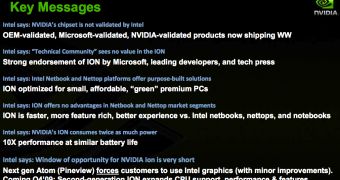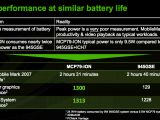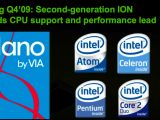Over the past weeks, two of the world’s leading chip makers, NVIDIA and Intel, have engaged in statement war, which started from the former’s public response to a recent court filing of the latter, alleging that the chipset license agreement between the two companies was no longer valid for Intel’s future generation of CPUs with “integrated” memory controllers. After NVIDIA’s reaction, Intel quickly followed with a reply, which came in the form of a document titled “NVIDIA Ion Competitive Position Guide,” where Intel basically picked on its rival’s Ion platform. In a recent turn of events, graphics chip maker NVIDIA has just responded to Intel’s claims, in a document that was simply dubbed “NVIDIA Response to Intel Claims on Ion.”
In the 13-page document the company basically says that the Ion gives a “faster, more feature rich, better experience,” compared to Intel’s own products. NVIDIA has gathered an entire arsenal against its Santa Clara, California neighbor, citing quotes from Microsoft, software and game developers, technical publications, all of which support the Ion. NVIDIA appears to be really hooked on its connection with Microsoft which has acknowledged the platform for its capability to provide users with a “premium Windows experience.” That’s a strong point, as current Intel Atom processors and their correspondent Intel chipset are more suitable for Microsoft’s Windows XP operating system.
In addition, NVIDIA has also responded to Intel’s claims that the “window of opportunity for the NVIDIA Ion is very short.” This response offers a perspective on some of the company’s upcoming products, as NVIDIA plans to expand the CPU support of its Ion platform, with the introduction of the second-generation Ion, slated for a Q4, 2009 release. This second-generation chip will also boast a better performance and expand its features. In addition, with the new chip, NVIDIA plans to add support for VIA’s Nano processor, which will most likely turn into Intel’s main rival in the market for netbooks and nettops. On that note, NVIDIA’s slide is somewhat revealing, as the Nano Logo takes up as much space as all of Intel’s different processor logos.
We are still to get a sense of how the battle between the two companies will benefit the end user. Ultimately, the result of this battle will likely change the face of the netbook market. In the meantime, we are expecting some of the first Ion-based products to hit the market, as more reports appear to indicate that the very first Ion-based systems will become available early this summer.

 14 DAY TRIAL //
14 DAY TRIAL // 

